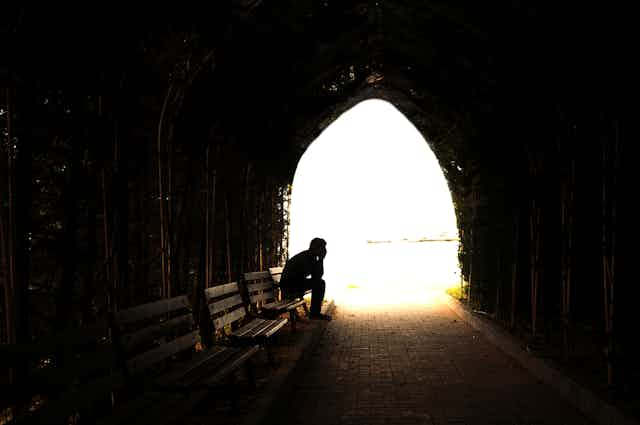Terrorism is frightening. It is in the news on a daily basis, creating fear and concern for everyone. Governments around the world need to develop and share intelligence about people connected to terror networks. Everybody is trying to understand how to respond. Attention is shifting to preventive strategies.
A new strand of research that my colleagues and I are working on has looked at new ways of understanding which characteristics and life events might prevent people from developing sympathies for terrorism and violence – and those that may increase the risk that they do.
After the London bombings in July 2005, the idea of “radicalisation” – a process by which ordinary people begin to support violent protest and terrorism – was used to explain home-grown terrorism. The UK government’s recent counter strategy subsequently placed responsibilities on public organisations, including health bodies and schools, to have “due regard” to preventing people being drawn into terrorism.
Health professionals and teachers are alarmed by this expectation, as they do not know how to identify who is at risk of becoming radicalised. Parents, too, want to know what to do if they suspect their children are being drawn into extremist political movements that advocate violence.
One study of the 9/11 terror attacks in the US suggested that the process of radicalisation happens in stages, and that prevention in the early stages may be possible. A first step is to understand why people begin to sympathise with violent protest and terrorism in order to develop ways of preventing the growth of these sympathies.

A new science of prediction
But there is very little evidence that radicalisation is a simple process or that researchers have been able to recognise it or suggest how to prevent it. The science of predicting very rare but serious events, such as homicide or suicide, shows too many false positives. This means too many people are predicted to be at risk than actually are and using such statistical techniques would make us overly concerned about more people than would ever become a serous threat to themselves or others.
In my research, I propose that radicalisation might be better understood by using the scientific methods of public health and epidemiology. These examine patterns of risk and protective influences in large populations to better understand causes and what might be preventive. The same approach is used to understand and prevent young people attracted to violent gangs, criminality or substance abuse.
In a 2014 study that I undertook with my colleagues, we wanted to test popular but unproven views that life events, discrimination, and unemployment, as well as psychological distress were somehow linked to radicalisation. We surveyed 600 Bangladeshi and Pakistani men and women in two English cities, as these were among the groups of people about whom concerns were being expressed. First, we had to develop a way of measuring their sympathies for violent protest and terrorism. As there was no way of measuring this at the time, we asked people of both Muslim and non-Muslim heritage to form a community panel to help us draw up the questions.
After reviewing and testing their suggestions we produced a final set of 16 questions. For example, we asked if people “sympathised with” or “condemned” different activities such as organising radical movements, using bombs or suicide bombs.
In our analysis of the results, we found that those who were more sympathetic to terrorism or violent protest tended to be more socially isolated, but they were not poor and did not report more discrimination than those who condemned or were neutral about terrorism and violent protest. Those who were more sympathetic to violence were also less politically engaged and had more depressive symptoms in the two-week period before the survey. Depressive symptoms included feeling down, depressed or hopeless, showing little interest or pleasure in doing things, and thinking that they would be better off dead.
Life gets in the way
Using this same sample, we undertook further investigations. We wanted to better understand why depressive symptoms might be related to sympathies for violence, perhaps, and whether adverse life events caused the depression and therefore led to more sympathies. Surprisingly, those who had experienced certain types of life events like the death of a close friend or relative were on the whole less likely to have sympathies for terrorism and violent protest. The same was found for people who gave money to a charity. Our findings also suggest some other interesting effects: people who did voluntary work or who voted in the most recent council elections also had fewer sympathies for extremist actions.
But although depressive symptoms in respondents seemed to correlate with having more sympathies for violent protest and terrorism, the effect was actually relatively small. And overall those who had experienced adverse life events, such as a bereavement, still had less chance of showing these sympathies, even if they also had depressive symptoms.
There is also ongoing debate about whether mental illness is related to terrorism. While we know that mostly there is no relationship between the two, among isolated individuals, mental illnesses may be relevant to whether they develop and act on extremist ideas. Careful analysis is therefore needed for every terrorist incident.
The results of our work so far suggest that for the Pakistani and Bangladeshi people that we spoke to, promoting healthy social connections, being part of a community and being politically interested seem to be important targets for prevention.
A great deal more needs to be investigated, and we are currently undertaking more research involving a similarly large group of White British and Pakistani heritage in the North of England. We hope to better shed light on this complex problem.

